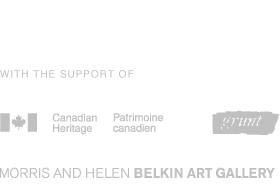Aboriginal Art in the Sixties: Fine and Popular
-
51
details
-
75
details
-
107
details
-
106
details
-
105
details
-
104
details
-
98
details
-
97
details
-
96
details
-
74
details
-
163
details
-
71
details
-
69
details
-
65
details
-
820
details
-
816
details
-
814
details
-
813
details
-
108
details
-
240
details
-
809
details
-
54
details
-
59
details
-
10
details
-
180
details
-
168
details
-
167
details
-
824
details
-
823
details
-
817
details
-
181
details
-
815
details
-
241
details
-
811
details
-
787
details
-
786
details
-
784
details
-
242
details
-
810
details
-
244
details
-
52
details
-
158
details
-
171
details
-
166
details
-
165
details
-
162
details
-
161
details
-
160
details
-
159
details
-
157
details
-
176
details
-
156
details
-
103
details
-
102
details
-
101
details
-
93
details
-
60
details
-
55
details
-
174
details
-
177
details
-
172
details
-
243
details
-
170
details
-
169
details
-
164
details
-
73
details
-
828
details
-
819
details
-
818
details
-
234
details
-
178
details
-
233
details
-
232
details
-
231
details
-
230
details
-
183
details
-
182
details
-
821
details
-
179
details
-
89
details
Community and Change:
Aboriginal Social Clubs
A limited number of threads link together significant aboriginal cultural and political leaders with contemporary aboriginal organizations and clubs. These links provide a window on the emergence of urban aboriginal communities in which self-identifying traditionalists and “moderns” circulated. Key actors and groups involved in modern Indian art and cultural practices included those who lived in and/or migrated to and from the city. People joined together in Vancouver because of cultural connections and similarity between areas, including “the diffusion of culture by the mass media.” Links of kinship, friendship and community ties between artists and organizations created a context for the formation of social clubs, created and led by aboriginal people themselves.
Salish canoe races in North Vancouver
Communities were formed in Vancouver on unstable ground, parallel to great socio-political change in which some political and cultural leaders crossed national and religious lines to achieve shared goals. For example, Catholic Coast Salish leader Andy Paull joined the predominantly Anglican Native Brotherhood in 1933. Paull, also an important sports figure in Vancouver, mentored Simon Baker, whose Coast Salish family created the Capilano Community club in the 1940s to honour the teachings of Mary Capilano. By 1958 the Club had grown from family gatherings to large sports and powwow events that boasted thousands of participants and spectators. Baker’s interests also included his membership in the Native Brotherhood, and the Vancouver Coqualeetza Fellowship Club, formed by residential school graduates with the support of Raley, their past principal. The membership was “non-sectarian and non-political” (Evans) and included in its mandate the aim to “gather and display items made by Native people of BC and America,” and to assist, support and provide a gathering place for newcomers to the city.
In 1953 the Coqualeetza club held their first exhibition of Native arts and crafts at the Vancouver Art Gallery, which included a cross-section of artists whose rich and multi-layered lives also involved serving as artist-educators, board-members and community and political leaders. These people created a living aboriginal public identity recognized as far away as Europe, as opposed to the archival, anthropological identity that was framed by museums. Examining the activities that took place in association the social clubs has the potential to unravel existing art histories that have focused solely on Indian art production in museums and galleries.
